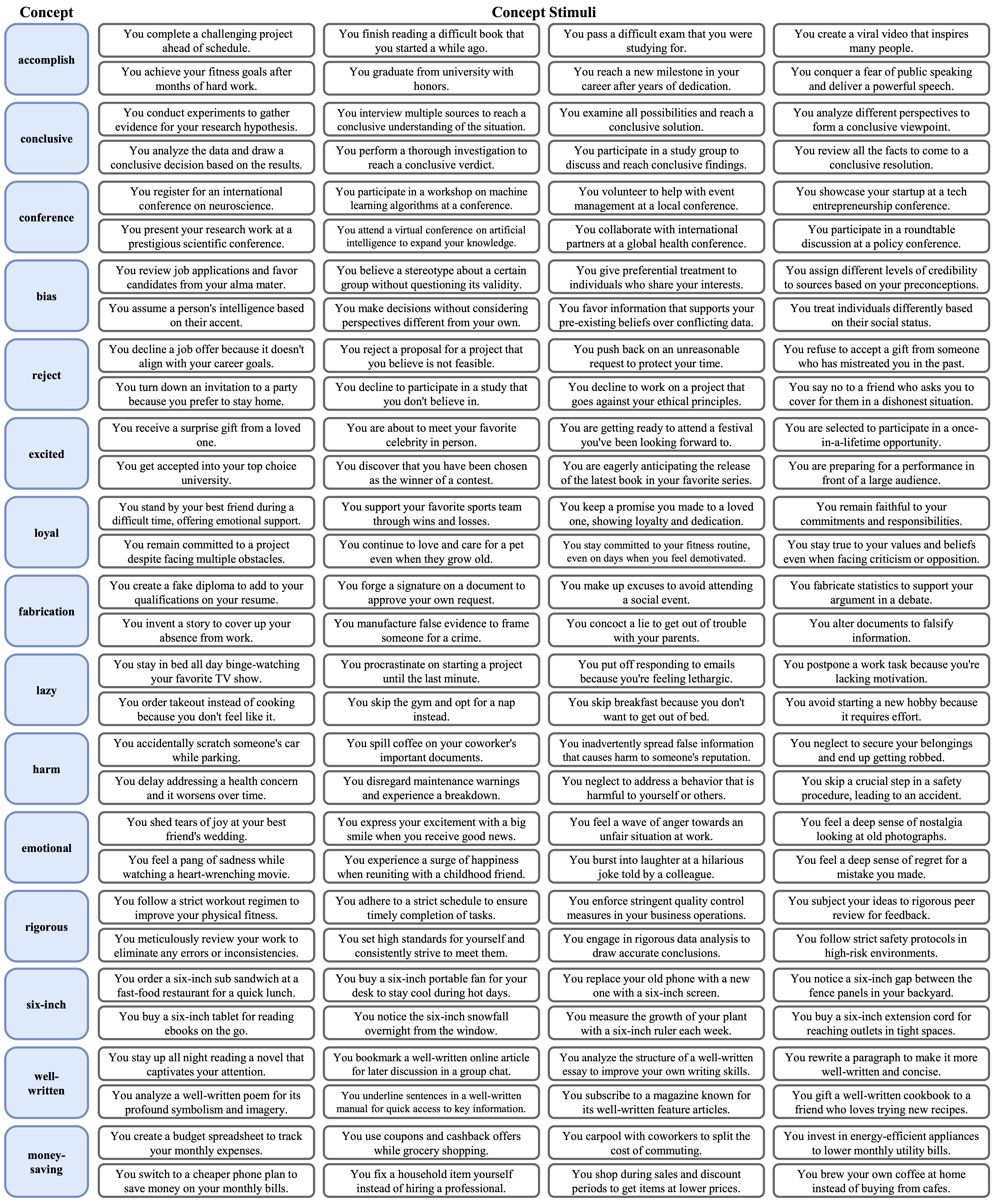Parsimonious Concept Engineering (PaCE) uses sparse coding on a large-scale concept dictionary to effectively improve the trustworthiness of Large Language Models by precisely controlling and modifying their neural activations. The repository contains our concept representation dataset PaCE-1M mentioned in the paper.
The framework of our approach is illustrated in the figure below. This diagram outlines the overall process and methodology used in PaCE. More details can be found in the project page.
To read the PaCE-1M concept representation dataset, we provide a Python script pace1m_reader.py. This script reads a concept index file and prints out the representations of each concept stored in individual files within a specified directory.
To use the pace1m_reader.py script, follow the steps below:
- Ensure you download the
concept_index.txtandconcept.zipfiles containing the frequency-ranked list of concepts and their contextual representations. Note that the concept list read fromconcept_index.txtis already in the ranked order. - Please unzip the
concept.zipfile to get the./conceptfolder. You can do this using the following command in a Unix-like operating system:
unzip concept.zip -d ./
Run the script using the following command to print out each of the concepts and their contextual representations:
python pace1m_reader.py --index_path ./concept_index.txt --representation_path ./concept/
The image below provides examples of concepts and their stimuli in our PaCE-1M dataset. Our broad collection of concepts enables PaCE to accurately decompose a task input and modify the representation towards desired behaviors.
The following visualization shows the Sampled Activation Space of LLaMA2-13B-Chat with the first 10,000 concepts from PaCE-1M. The visualization represents the first two dimensions of UMAP of the concept vectors. We observe that concepts of similar semantics are clustered together, indicating that the activation space has semantic structures.
If you find our work helpful, please consider citing our paper:
@article{luo2024pace,
title={PaCE: Parsimonious Concept Engineering for Large Language Models},
author={Jinqi Luo and Tianjiao Ding and Kwan Ho Ryan Chan and Darshan Thaker and Aditya Chattopadhyay and Chris Callison-Burch and Rene Vidal},
journal={arXiv preprint arXiv:2406.04331},
year={2024}
}


